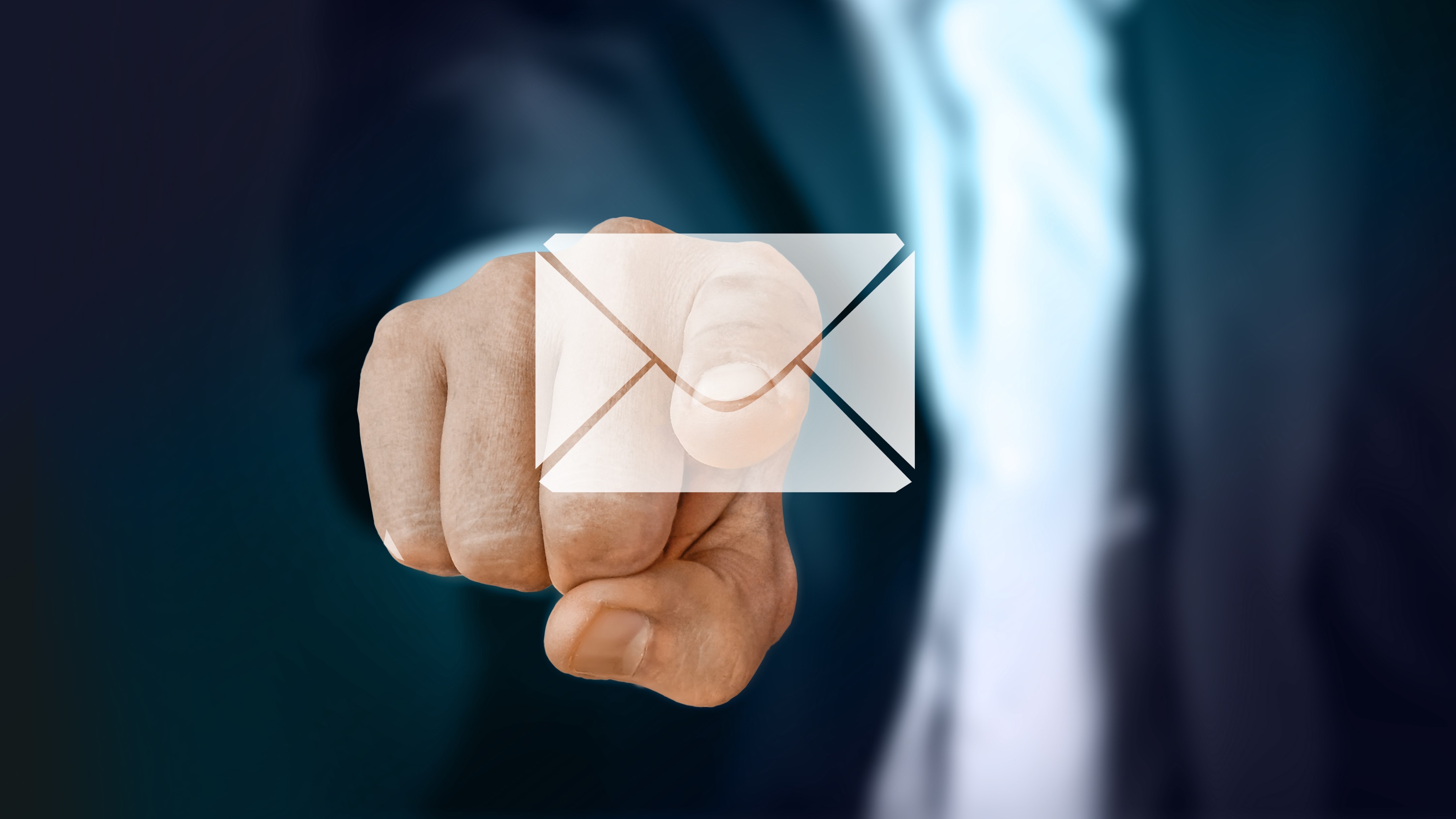How to reclaim 30 hours of work per week by checking email for seven minutes
Simple productivity tips

Most of us have a love-hate relationship with email. We know it’s part of life, but few of us like processing it all day. The boss sends us a message late at night. We hop right on it because that’s how we think productivity works. A few emails go to the spam folder by mistake, so we have to check there. Many of our emails are mundane, boring, stale, and annoying. The more email we receive, the more time we invest in decluttering our inbox.
In 2015, I made a glorious prediction that proved to be (mostly) true. Let me pause to pat my own back and feed my own ego. Okay, I’m done now.
I predicted the death of email about six years ago. It’s not quite dead now, but I was right about one thing: entire companies now rely on collaborative messaging apps like Slack instead of email. Employees seem happy about it. I’m calling that a success because email is not the primary form of communication. (I have to fess up that this is only true within certain teams and for certain types of discussions.)
When I first wrote about email reaching this comatose state, readers agreed and gave each other high fives—or so I imagined. The king is dead, long live the king! Millions of people applauded the prediction, although some of them congratulated my pronouncement by sending me an email. I wrote #irony in reply.
Others were not so happy. Writing about the death of a messaging system beloved by those who use it as a marketing tool, for example, created some tension. One of my favorite exchanges occurred on Twitter of all places. I posted a link to my article predicting the dire state of email as a go-to platform, and someone kept arguing with me about it. After a few messages, the person realized he was arguing about email using a platform that’s far more efficient when it comes to quick conversations and discussions. I’m sure he couldn’t find my email address, right?
I decided to poke around with some collaboration experts and ask them why email is still a necessary evil, and the consensus was clear: it’s because we’re not very good at processing it. During a phone call with Wayne Kurtzman, a researcher at the analyst firm IDC, I asked about how email is destroying productivity. I almost choked on my own email address when he told me about the results of a recent survey. He said that when modern workers rely more on collaborative apps like Slack, they reclaim thirty hours of work per week. I couldn’t believe it—so I emailed him.
“Wayne, can you tell me that again?” I wrote.
Are you a pro? Subscribe to our newsletter
Sign up to the TechRadar Pro newsletter to get all the top news, opinion, features and guidance your business needs to succeed!
“Yes, we can regain 30 hours! Collaboration is a team sport, and email is not. Email is a collection of personal silos of information that is hard to find and near impossible to effectively organize,” he emailed back.
Then I found another survey from Adobe, the company famous for making the Photoshop image editing app and many other tools. I wondered if a second survey might negate or disprove the IDC results. When I read the findings, I had to stop and pause for a moment. Adobe also found people spend thirty hours per week chasing their email. The plot thickens! That’s about six hours per day. My goodness. It’s no wonder computer scientist Cal Newport wrote an entire book about email ruining the workplace.
I tend to check email in short productive spurts. I’m lightning fast. Fingers clicking on the keyboard, swiping on my phone, tapping out replies—it’s like watching a pro gamer use an Xbox controller minus the bazookas and total carnage.
For a few minutes, I’m on fire. I spend the time weeding through messages and then move on to other tasks. We anticipate the conflicts, the drama, the lack of resolution. We get angry and sad. Newport says email is a terrible platform for dealing with the emotional nuances of life. This type of messaging seems to create emotional disconnection instead.
Author and productivity expert Chris Bailey has a theory about why that is. We experience attention overload and become zombielike as we browse email and leave too many of them unopened.
Cal Newport goes to great lengths to avoid email. He doesn’t have a public email address that actually reaches him. In a podcast interview with wellness expert Rich Roll, he explained how an unnamed Stanford researcher he knows doesn’t even have an email address. He doesn’t want to “stay on top of things” and prefers to focus on his research. He has a public mailing address instead. To contact him, you have to mail a letter, which his assistant gathers for him and puts in his physical inbox.
Science-fiction author Neal Stephenson also doesn’t use email. He has explained that he wants to focus on writing and not correspondence, to deal with his most relevant and immediate concerns. He tells readers he is more productive that way. He doesn’t want you to bother him.
Most of us don’t have that luxury. Email is required in an office setting. Yet we can relegate email to a place of lesser prominence. To do that, to reclaim thirty hours of work per week, a good first step is to conduct an experiment to see how reliant you are on the medium.
The experiment goes like this. During an entire day, keep track of how often you check email. It can be just a quick second or a longer session. Track the total number of sessions you do at work and at home, whether on your phone, tablet, computer, or any other device.
Let’s assume each session averages out to about fifteen minutes. If you check email twenty times per day, far below what is typical for most office workers, that’s five hours of messaging per day. Assuming you do this each day of the week and a little on the weekend, that’s thirty hours.
I’m here to say you can win this battle. I know because I did.
Reclaiming the time
Around 2018, I started a series of articles about millennials and what makes them tick. One column mentioned that millennials tend to hate older generations, including anyone over fifty. It struck a nerve. For an entire week, my inbox was bursting at the seams. I received several hundred emails per day about that one topic. It was a mix of angry millennials saying the article missed the mark, older generations agreeing with me, millennials saying they liked what I had to say, and a few lost Gen Z souls wondering why anyone cared in the first place.
I became slightly obsessed about this email influx but in a good way. Every few hours, I’d look through another new batch. It was a strange week. And yet, I decided to respond to the most thoughtful emails. I commiserated with the readers who said they felt misunderstood. I replied to the angry readers and tried to engage in a healthy discussion with them.
Here’s the interesting part. At the time, I applied a simple seven-minute method to these email sessions, something I’ve been doing for years. I was intentional and deliberate about it. I set aside any personal reasons for wanting to read what people had to say about my article and simply started processing the emails in a way that was more about the results and viewing email as a task that must be mastered than craving the microrewards and dopamine hits. I was doing this so that I could reply faster.
It was incredibly refreshing to be more intentional about my email. This “check email for seven minutes at a time” routine helps us be more focused. The science of sustained attention span—the period of time when we are far more productive, efficient, and attentive that is the basis for this entire book—has proven itself over and over again.
I spent exactly seven minutes processing my email, then set it aside for several hours. I didn’t need to constantly go back and check for new messages. By introducing new parameters to this common activity of chasing email, I reduced it from an obsessive and time-consuming activity to one that was more streamlined and enjoyable. That’s how I’ve checked my email for many years: seven minutes at a time.
It’s a freeing exercise. You become more aware of why you like to check email, but you resist the temptation to let that guide your actions—and ruin your productivity. By processing your email in a more disciplined way, you free yourself to do more important tasks. You’ll find you can achieve far more in your job and in your life when you become more intentional and systematic with things that don’t really impact who you are and what you really care about the most. Intentionality leads to more efficiency.
This excerpt is from the book The 7-Minute Productivity Solution by John Brandon, from Baker Books, a division of Baker Publishing Group, copyright 2022, used by permission.
Find the best secure email providers.
John Brandon has covered gadgets and cars for the past 12 years having published over 12,000 articles and tested nearly 8,000 products. He's nothing if not prolific. Before starting his writing career, he led an Information Design practice at a large consumer electronics retailer in the US. His hobbies include deep sea exploration, complaining about the weather, and engineering a vast multiverse conspiracy.
